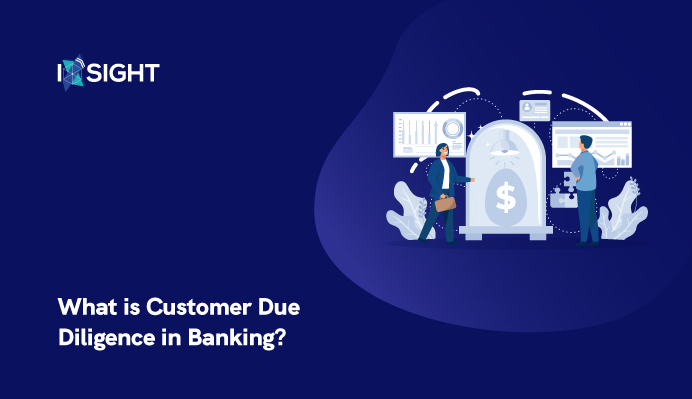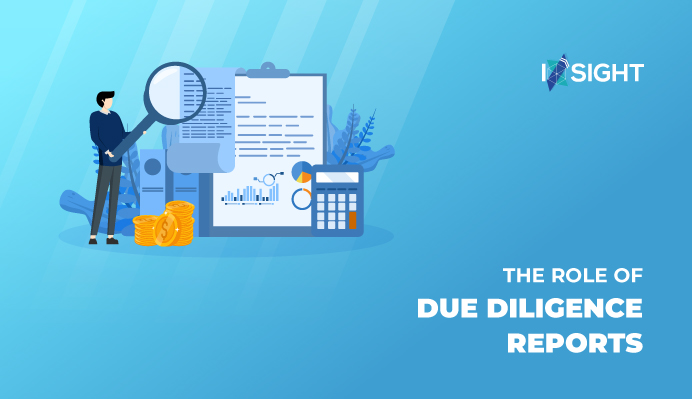Ixsight is looking for passionate individuals to join our team. Learn more

Ixsight is looking for passionate individuals to join our team. Learn more


In this developing world, with rapid change in the financial sphere, regulatory and security requirements are becoming highly important to banks and financial companies. Customer Due Diligence (CDD) is one of the processes that support such initiatives. However, what is customer due diligence in the banking industry, and why does it become so crucial? This exhaustive guide is going to delve into the depths of CDD, its use in the banking field, and the intersection of CDD with mere concepts such as enhanced due diligence, due diligence reports, and AML software. In the final part, you will perfectly understand the ways in which CDD protects the financial system and leads to compliance with regulations.
Customer Due Diligence forms the main pillar of banking compliance practice. In effect, CDD can be described as some of the procedures that banks and other financial institutions employ to determine the identity of the individuals who are their customers, as well as determine their risk levels, and they do not engage in illegal actions/crimes like money laundering, terror financing, or fraud. CDD is an essential part of Anti-Money Laundering (AML ) and Know Your Customer ( KYC) policies, which are adopted in all countries, aiming at keeping the financial system intact.
Banking is a heavily regulated industry where trust and transparency are the key aspects. CDD pertains to performing a number of objectives:
In order to provide the answer to the question given, what is customer due diligence in banking, it is imperative to break down the main elements of it. There are three common steps in CDD:
Identification of a customer is the initial process in the CDD. Under this program, commonly called the Customer Identification Program (CIP), banks are required to gather and verify identifying information, which may include:
In the case of businesses, banks might also require some documents such as founding articles, a business permit, or evidence of good ownership.
When the identity of a customer is established, banks determine the riskiness of a customer. This entails considering such issues as:
Customers so classified are considered to be low-risk, medium-risk, and high-risk customers. There is a possibility that high-risk customers need higher due diligence (more on it later).
CDD is not a one-time activity. Banks are required to keep account of direct control and monitoring of accounts with customers that would show suspicious activities or variation in risks. This is done by monitoring transactions, identifying which customers have not changed contact details, and raising an anomaly that might be a financial crime.
Although most customers are adequately served through standard CDD, there are other scenarios that require enhanced due diligence (EDD). EDD is more thorough and is normally done on high-risk customers, which include:
EDD surpasses normal CDD as it needs more confirmation measures, i.e.:
For more information on how to optimize the EDD process, visit our blog on Enhance Customer Due Diligence in KYC to get practical information.
The importance of EDD is avoiding the risks that cannot be solved or covered by the standard CDD. As an example, there could be more possibilities of corruption in PEPs, and customers in high-risk jurisdictions may be more prone to engage in money laundering. EDD by the banks will enable them to safeguard themselves and the financial system in general.

A due diligence report is a detailed report that summarizes the results of the CDD or EDD process. This is necessary to ensure that there is compliance and an effective audit trail. The standard due diligence account will incorporate:
The AML software is usually applied by banks to make due diligence reports easily since it is created with such accuracy and efficiency.
The digital era, in which we live, requires AML software to be given a central position in the context of due diligence in banking. The high-end tools make CDD automated and more effective and efficient. The AML program facilitates CDD by doing the following:
AML software uses global databases to compare the real-time identity of the customer. This helps in eliminating manual errors and increases the onboarding speed.
Advanced rules evaluate the risk of a client according to built-in criteria, including geographic location, transaction behaviour, and watch listing verification. In this way, this will provide consistent and objective risk assessments.
The AML software runs in the background to keep track of abnormal activities of customers, like abnormal inflows or outflows of cash or transfers of funds to higher-risk jurisdictions. It marks abnormalities that merit deeper exploration, thus mitigating financial crime.
The software of AML is created to correspond to the laws that are adopted in different countries all over the world, and therefore, banks do not violate the AML and KYC regulations. It also provides detailed due diligence reports for audit as well.
The AML software also offers tools that allow a thorough investigation of high-risk customers, like beneficial ownership tracking and PEP screening.
Banks have the opportunity to make their CDD more efficient by using AML software and minimizing their operational expenses and the likelihood of financial crimes.
Although Customer Due Diligence (CDD) plays a very important role in compliance and security assurance in banks, it is not devoid of its major challenges. These challenges may frustrate the process of due diligence in banking and challenge them to offer tactical approaches to adhere to efficiency and compliance. Issues that are of fundamental concern are:
In order to achieve effective implementation of CDD, the banks are supposed to embrace the following best practices:
Independent of the AML software: Automate parts of the AML process by employing AML software to handle identity checks, risk scores, and monitor transactions.
To learn more about the CDD optimization, check out a blog on Enhancing Customer Due Diligence in KYC.
With financial crime becoming increasingly sophisticated, the significance of CDD can only be increased. Artificial intelligence (AI), machine learning, and blockchain are emerging technologies that will disrupt the way banking does due diligence. The future is like this:
With a view to being one step ahead of such trends, banks are able to improve their CDD procedures and better guard the financial system.
Customer Due Diligence is an important procedure that guarantees the safety and integrity of the banking industry. By being able to verify customer identity, calculate risks, and use tools such as AML software, banks will not be able to commit a financial crime and will not violate regulatory standards. When it comes to carrying a general CDD or a strong level of due diligence on high-risk customers, the purpose of acting is always the same: to protect the financial system and also to create trust.
To know more about how you can optimize your CDD processes, visit our blog on Enhancing Customer Due Diligence in KYC. Through best practices and technology,banks will be able to avoid the pitfalls of due diligence in banking and succeed in an ever-regulated world.
Ixsight provides Deduplication Software that ensures accurate data management. Alongside Sanctions Screening Software and AML Software are critical for compliance and risk management, Data Scrubbing Software and Data Cleaning Software enhance data quality, making Ixsight a key player in the financial compliance industry.
1. What Is Customer Due Diligence in Banking?
Customer Due Diligence (CDD) is the process banks use to identify and verify their customers before opening accounts. It helps banks understand who their customers are, what they do for business, and assess any risks of working with them. CDD is part of anti-money laundering (AML) rules that banks must follow to prevent criminals from using the financial system.
2. What is a CDD checklist?
A CDD checklist is a tool that banks use to ensure they complete all necessary steps when checking customers. The checklist typically includes:
The checklist ensures banks don't miss any important verification steps and stay compliant with regulations
3. What does CDD mean in KYC?
CDD is a key part of Know Your Customer (KYC) processes. While KYC focuses on verifying who the customer is, CDD goes deeper by analyzing the customer's activities and assessing risks throughout the relationship. CDD is an ongoing process that continues after the customer is onboarded, whereas KYC is mainly done at the beginning.
4. Why is customer due diligence important?
Customer due diligence is important because it:
Banks that don't properly conduct CDD can face billions in fines from regulators.
5. What is the main purpose of due diligence?
The main purpose of due diligence is to reduce risk. It ensures organizations have all the necessary information before making important decisions or entering business relationships. Due diligence helps identify potential problems early so they can be addressed or avoided entirely.
Our team is ready to help you 24×7. Get in touch with us now!